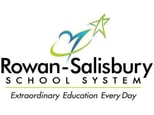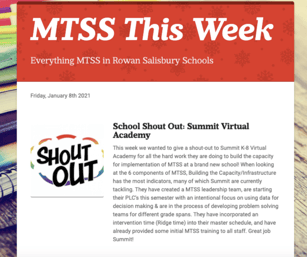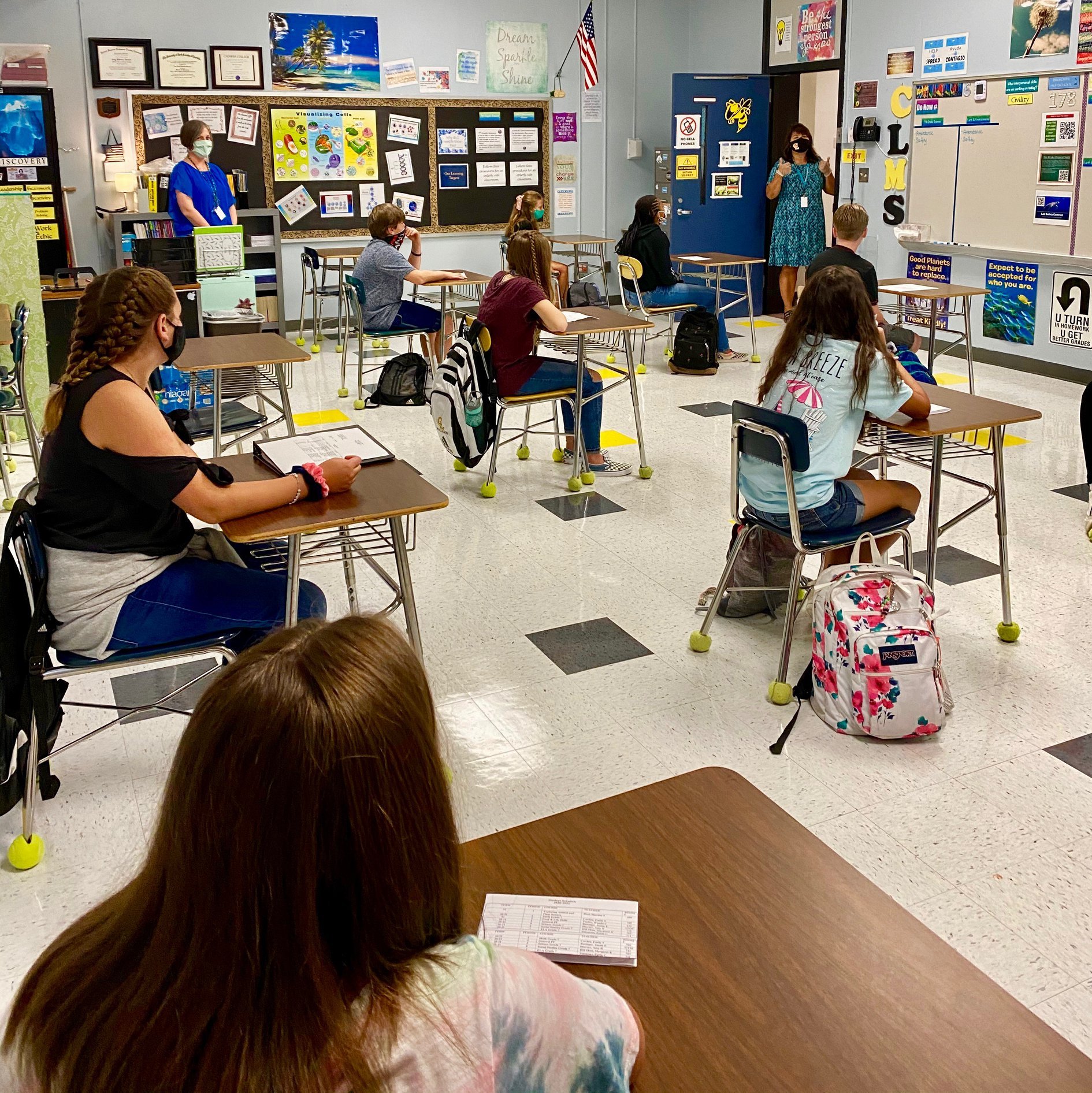 Like most districts during the COVID-19 pandemic, North Carolina's Rowan-Salisbury Schools faced big challenges in the shift to remote and hybrid learning.
Like most districts during the COVID-19 pandemic, North Carolina's Rowan-Salisbury Schools faced big challenges in the shift to remote and hybrid learning.
From supporting all learners virtually, to adapting interventions for online delivery, to providing equitable support for every student—school and district teams needed to move quickly to adapt their multi-tiered system of supports (MTSS) to an entirely new learning context.
Rowan-Salisbury Schools serves 18,000 students across 35 schools, including 19 elementary schools, seven middle schools, and eight high schools. (In response to COVID-19, the district also opened a K-8 virtual school with 2,500 students!)
Despite the challenges, the team at Rowan-Salisbury forged ahead with creative strategies to strengthen their MTSS and respond to unfinished learning. This included partnering with Panorama to roll out the Student Success MTSS platform across the district.
We spoke with Alison B. Augustson, elementary MTSS coordinator, and Matthew D. Harriger, secondary MTSS coordinator, to learn more about Rowan-Salisbury's MTSS journey, how they've adjusted their systems and practices during COVID-19, and how they're using Panorama Student Success to collaboratively support the whole child.
Read excerpts from our conversation below or watch the full webinar recording.
What Are the Core MTSS Tenets and Tools in Place at Rowan-Salisbury?
Alison Augustson: At Rowan-Salisbury, we emphasize the importance of reaching all students. In the world of MTSS, it's common to think about interventions, but it should really be about building strong core instruction and defining what the core instruction should look like.
Panorama Student Success has been such a valuable tool to us this year. It is a platform that functions as an MTSS early warning system. It shows us how students across all of our schools are doing in the key areas of academics, attendance, and behavior. It also houses our intervention plans and progress monitoring, keeping all that information in one place.
Matthew Harriger: Much of our work to adapt our core instruction has come from using data in Panorama Student Success to ask, “What trends are we seeing amongst all of our students?” and “What changes do we need to make?” MTSS is about problem-solving. It’s about identifying issues and seeing what we can do to fix them, and looking back to see if our practices are working or not.
When we began partnering with Panorama, we decided that we would do a full district roll-out for Student Success. In prior years, we had offered a different MTSS platform that was optional for schools to use. We found that while some schools used it, most schools still used Google Docs, spreadsheets, paper, and pencil to do their documentation and data analysis.
Having Panorama as a consistent tool across all schools and grade-level teams has been so important, especially since we have a transient student population. With Panorama, the data follows students from school to school. We can also track intervention plans across the district, so if a student transfers, we know that there was an intervention plan in place at their previous school.
"Much of our work to adapt our core instruction has come from using Panorama Student Success to ask, 'What trends are we seeing amongst all of our students?' and 'What changes do we need to make?' MTSS is about problem-solving. It’s about identifying issues and seeing what we can do to fix them."
–Matthew Harriger, Secondary MTSS Coordinator
Additional Reading: "What Is It Like to Implement Panorama Student Success District Wide?"
Responding to Schooling Loss With Whole Child Data
AA: Student Success is helping us better respond to student needs and unfinished learning this year since our data is in one spot. It makes it really efficient for teachers and our staff to see how schools and students are doing across their coursework and grades, literacy and math screener data, attendance, and behavior.
Seeing the data in this way helps us understand where we need to intervene. With Success, we can clearly see if students are struggling in multiple areas. And if they are, it helps to figure out where to start. Often, we want to start with academics. Really, we should be looking at attendance, engagement, and behavior—what's going on in students' lives? Student Success has helped us look deeper instead of jumping straight to academics.
.png?width=711&height=466&name=student%20overview%20life%20skills%20(3).png) This image depicts demo data.
This image depicts demo data.
In addition, given that we're experiencing learning loss more than ever this year, we recognized that our previously established data decision rules—the rules that guide our decision-making within MTSS—were not going to work.
In response, we've been adjusting our data decision rules for which students receive supplemental or intensive intervention. We don't want to over-intervene and "flood our intervention system," because that means we're not focusing enough on overall core instruction. Using our Panorama data, we've been adjusting those data decision rules and identifying where we need to push resources into our core to reach all of our students' needs.
"Often, we want to start with academics. Really, we should be looking at attendance, engagement, and behavior—what's going on in students' lives? Panorama Student Success has helped us look deeper instead of jumping straight to academics."
–Alison Augustson, Elementary MTSS Coordinator
Learn more about Panorama Student Success for MTSS.
Strengthening Collaboration Across Student Support Teams During Remote Learning
MH: In our district, every school has an MTSS leadership team that might consist of principals, coaches, counselors, or other staff. Before the shift to remote learning, we would hold monthly professional development (PD) meetings with MTSS leads. That changed in the spring when we couldn’t have in-person sessions. So, this past summer, we pivoted our collaboration structures to align with our new hybrid model. Here are a couple things we introduced:
 A weekly "S'More" newsletter (pictured to the right) to share effective MTSS practices and resources for strengthening core instruction. Initially this was sent out every Friday to our MTSS leads, but we're now sending it to a much broader audience.
A weekly "S'More" newsletter (pictured to the right) to share effective MTSS practices and resources for strengthening core instruction. Initially this was sent out every Friday to our MTSS leads, but we're now sending it to a much broader audience.- School shout-outs in the newsletter every week to share the great things that schools are doing—whether it's making videos on how to use Student Success, or creating a resource like a problem-solving MTSS Google Form for teachers and staff to use.
- A new MTSS Leadership Agenda (access the template here) that is modeled after another document that our district uses for school data meetings, but that turns the focus of the agenda to problem-solving.
- PD time on Wednesdays for training on new tools, since schools are fully remote on Wednesdays. In a year where we were rolling out all of these new platforms and screeners, it was a blessing in disguise that we had this dedicated time for PD. We were able to harness this time to provide training on Student Success as well as our new math and literacy screeners.
AA: In general, Student Success has increased communication and transparency across grade-level teams. It allows adults to see student data across all classes—which is especially important at the secondary level since teachers may see a student for just one class. For example, a social studies teacher can see a student's science and math grades, plus their student survey data and behavior data. It's been helpful for starting conversations among teachers about how to best work with students.
I also wanted to share one of my favorite features in Student Success: the ability to look at academic data from two lenses. We can see coursework and grades pulled in from PowerSchool, as well as our screener data from third-party sources like STAR Math and ExactPath. It's eye-opening for our principals and teachers to see how our grading aligns, or doesn't, with the screening data. We've been working towards competency-based, standards-based grading. Seeing the data in this light has been helpful for asking, "Are we grading a student's competency, or are we grading a student's compliance?"







